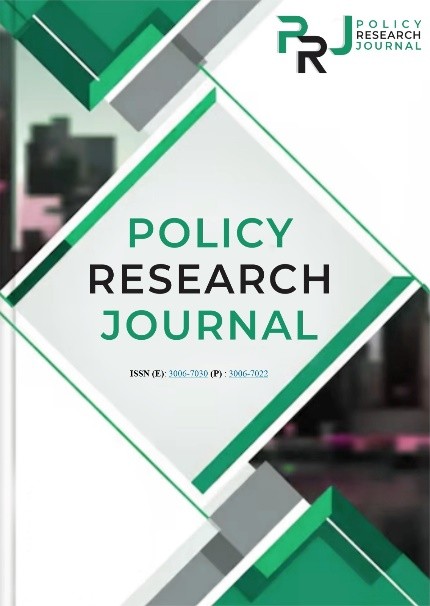ROLE OF TECTONIC INDUCED METAMORPHISM ON THE PETROGENESES OF BARITE DEPOSITS HOSTED IN TANAWAL FORMATION, PAKISTAN: PETROGRAPHIC AND GEOCHEMICAL PERSPECTIVES
Keywords:
Barite, quantitative analysis, geochemistry, petrography, hydrothermal vein bariteAbstract
Barite (barium sulfate, BaSO4) is very important in the oil and gas industry because it is a key ingredient in the oil base mud (OBM) used in the drilling of oil and gas wells. Elemental barium is an additive in optical glass, ceramic glazes, and other products. Based on occurrences, Barite have following four main types: bedded-sedimentary; bedded-volcanic; vein, cavity-fill, and metasomatic and residual. This study considered the formation, occurrence and distribution as well as the utilization and challenges facing in the mining of barite. Extensive fieldwork, selective sampling, petrographic and geochemical analysis were adopted as basic methodology for achieving the objectives of this study. Regional metamorphism in response to local tectonics act as the prominent controlling factors for the formation and paragenesis of barite deposits in the Khanano Dheri Buner area, Pakistan. Genetic relationship of barite deposits hosted in metamorphosed Tanawal Formation located in the lesser Himalayan zone will help in understanding the evolution of other economic mineralization in the region. Field observations, petrographic examination and analytical data interpretation indicate that the formation of barite is closely associated to the tectonic evolution of the region. The deposits are primarily hydrothermal vein deposits, in which barite crystallize from hydrothermal fluids during its migration and circulation in the host formation. This research provides a basic clue for the genesis of barite in high grade metamorphic terrain by hydrothermal mineralization, exhibiting the impact of tectonic evolution, geological history, and stratigraphic framework. Interpretation of geochemical analysis indicate that these barite deposits are epigenetic, formed through the interaction of hydrothermal fluids evolved from solidifying magma in a failed rift system of Permian age. Geochemical analysis reveals significant variations in the concentration of oxides concentrations observed in different samples. We observed inverse relationship between barium oxide (BaO) and sulfur trioxide (SO3), indication an increase in the concentration of BaO triggers decrease in SO3 concentration, demonstrating geochemically incompatibility. Furthermore, cross plot of CuO vs FeO represents an inverse relationship, exhibiting visible geochemical incompatibility between Cu and Fe. Moreover, the concentration of SrO decrease with decreasing CaO, represents direct relationship and probable geochemical compatibility between Ca and Sr. It has been observed that geochemical compatibility of ZnO and CuO varies significantly, indicating direct relationship as well as similar geochemical compatibility. In most of the analyzed samples the concentration of K2O is higher as compared to FeO, but exhibiting similar increase, represents a possible geochemical compatibility between K and Fe. Similarly, the concentration of ZnO remained relatively constant in the investigated samples and its interpretation reflects that its relationship in cross plot with SrO is inverse. The concentration of CuO decreases with the increasing amount of CaO, reflecting inverse relationship as well as geochemical incompatibility in the investigated samples.
















